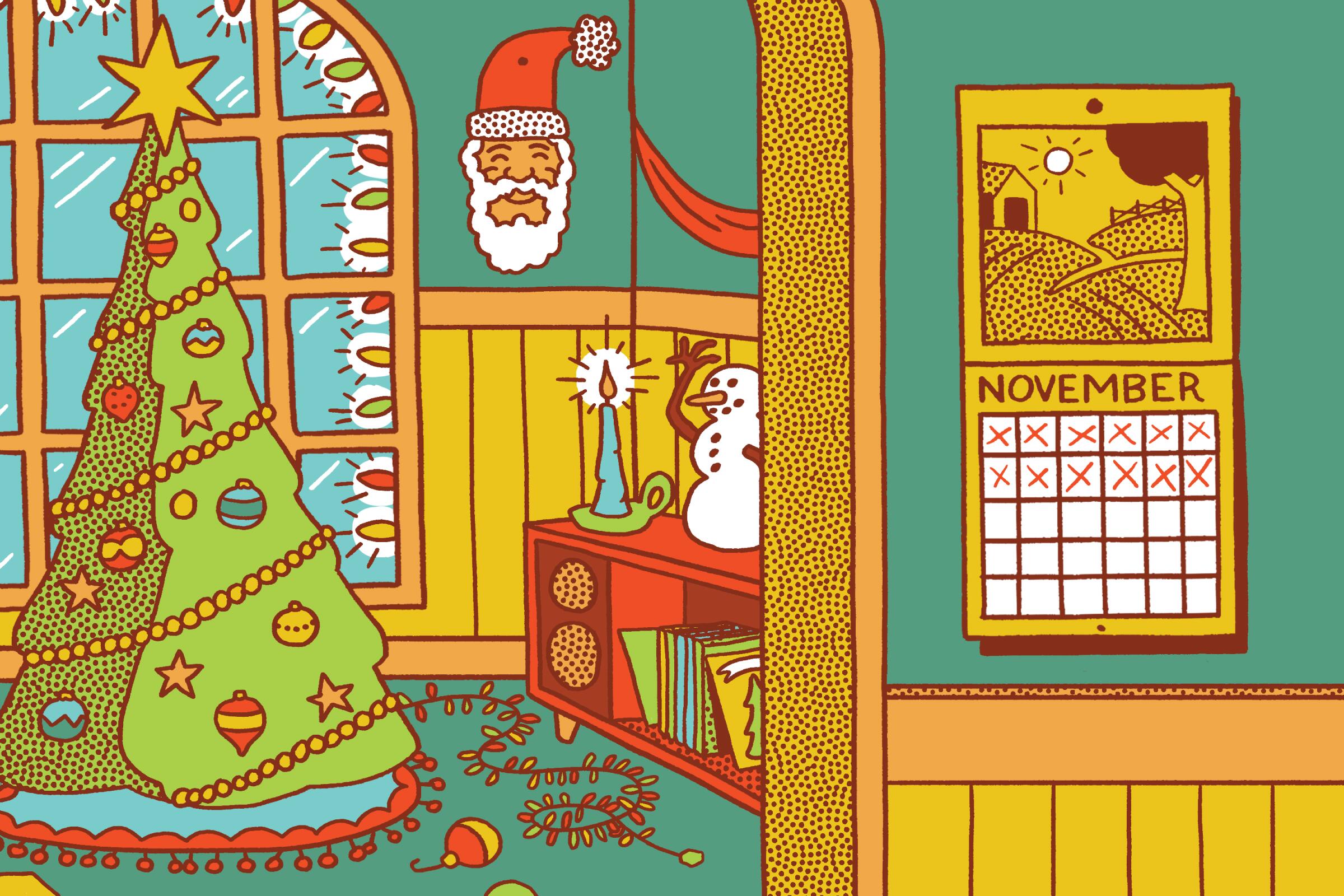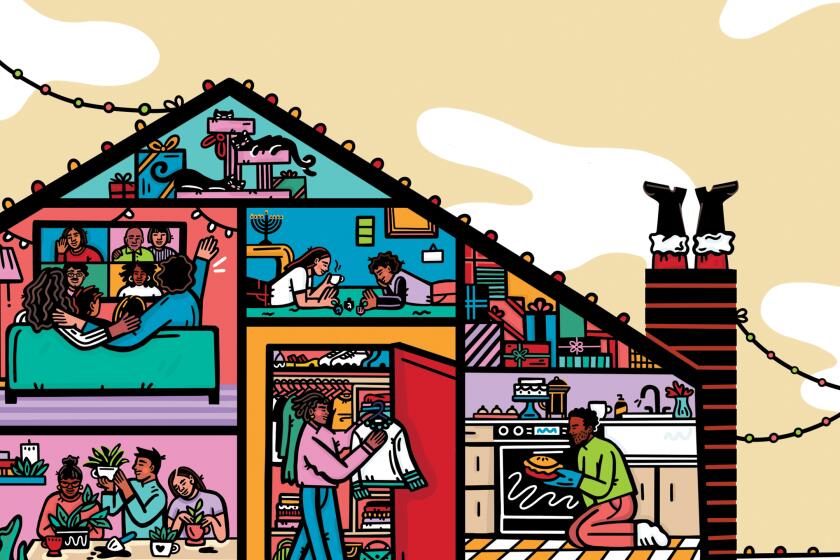It’s a question that yields well over half a billion Google search results. A debate that divides neighborhoods, families and friends groups. An issue that dozens of opinion pieces and lifestyle blogs have tried to address.
How early is too early to decorate for the holidays?
Many resist the urge to decorate until after Thanksgiving — and expect everyone else to follow the same rule. Some consider it a faux pas to string up lights until December begins, while others maintain a tradition of setting up their tree on Christmas Eve.
This year, Christmas trees and other expressions of Yuletide cheer are gracing residential streets and Instagram feeds well before Thanksgiving Day. The annual debate over holiday decorating now includes an extra layer of complexity: amid the stresses of the COVID-19 pandemic, can you really fault someone for finding joy where they can — even if it means setting up their snowmen in early November?
In pre-pandemic times, Dr. Nicole Baldwin, a pediatrician in Cincinnati, strictly avoided holiday decorating until the weekend after Thanksgiving. But this year, things have changed. Baldwin decided to bend her own rules and pull out her decorations a few weeks before Turkey Day. “It makes me happy. And I’m home so much,” she explains. “A lot of people just want that joy and a little bit of what feels like normalcy in this crazy year.”
Research suggests that visual representations of holiday cheer can have a tangible effect on our minds. A study published in 2015 successfully attempted “to detect and localise the Christmas spirit in the human brain.” When study subjects who celebrated Christmas were shown images with a Christmas theme, they exhibited clusters of increased activation in the sensory motor cortex, the premotor and primary motor cortex, and the parietal lobule compared with subjects who did not celebrate Christmas.
So our brains may experience “increased activation” when we see holiday images; could this reaction also occur when decorating our homes for the holidays?
“It’s quite possible that the reaction would be stronger,” study author and medical physicist Bryan Haddock said, though research has not been undertaken to explicitly show this. He explains that while the study’s subjects were shown general Christmas images, a more intense brain reaction could be triggered by seeing the comforting, familiar decorations you use every year. Though the study was limited to visual stimulation, Haddock says, “It’s quite possible that ... seeing, smelling [and] feeling things that you associate with Christmas could have even a larger effect.”
The multi-sensory experience of decorating is part of the reason why marriage and family therapist Cynthia Cerrato finds the yearly practice so calming. “For me, it’s very nostalgic. And it is very much a connection to my childhood,” she says. “We associate certain smells with certain past time … [for example,] the smell of cinnamon is something that is very soothing for me.”
Cerrato emphasizes the importance of intention — and consideration of one’s roots — while decorating for the holidays. “The passing down of certain ornaments or the passing down of Nacimientos ... that’s very healing in itself, especially for communities of color.” For example, she spends time carefully considering where and how to set up the Nacimiento scene her mother brought her from Yucatán. “Decorating is ritualistic, she said. “I intentionally create that ambience to have those pleasant joyful moments, at least for a few hours. Rituals are very soothing. Especially because we’re [in] a pandemic, which has significantly altered the way that we interact.”
It’s a vast understatement to say that 2020 presented some unique stressors to individuals and families across the world. The holidays are no exception: Many people are struggling with the decision to stay away from loved ones or risk exposing them to illness. “A lot of people are experiencing high rates of depression and anxiety because the holidays usually equals family get-togethers,” Cerrato says. “So that’s more of a reason ... why we should set up our home to be as warm and inviting and soothing as we can for ourselves.”
Staying busy with at-home activities such as gardening and sourdough baking has been a big part of life during the pandemic. “People may be trying to lift their mood more than ever,” notes Emma Seppälä, science director of the Stanford Center for Compassion and Altruism Research and Education. “People are certainly looking for ways to cheer themselves up and make their days brighter.”
Some might feel discouraged by neighbors and friends who disapprove of early decorating. Cerrato relates, saying, “I caught myself wondering, is it too early?” She decided that it doesn’t matter what others think as long as the act of decorating helped her experience more joy. “We should not be telling individuals it’s too early to do something that will bring you joy,” she said. “There is suffering that’s happening, but doing small things like this is bringing me joy.”
Outside of decorating, there are other things individuals can do to de-stress during the holiday season. Seppälä recommends taking the time to connect with friends and family virtually, especially if you can’t see them in person this year. “It’s a good time to make those phone calls, have those virtual parties and express our gratitude and appreciation for the people we are in contact with,” she suggests. “Research shows that gratitude, forgiveness and compassion are all emotions that have profound impacts on our psychological well-being and even physical health and longevity.”
Cerrato advises individuals to prioritize rest during the holiday season. “This is the season of rest and restoration,” she says. “Honor that you don’t have to be productive, that resting is productive.” One way to lean into the restorative aspects of the holiday season? “[Reconnect] to what the holidays felt like for you as a child,” Cerrato explains. For example, allow yourself to spend all day in pajamas — no guilt necessary. And even for those who don’t have positive memories of the holidays as children, she says, “At least as adults, we get to change that narrative now. ... That’s true healing, when we reclaim our power.”
While you’re spending time resting and catching up virtually with loved ones, making handmade holiday decorations can be a relaxing activity to help us escape from stress, at least for a little while. Just last week, Cerrato decided to make her own wreaths with painted corn husks. “Decorating our homes ... really does create an ambience of warmth,” she says. “The act of creating is extremely healing and soothing.”












